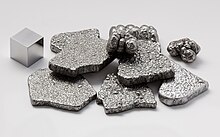Metals

Metals are a class of chemical elements characterized by their luster, malleability, ductility, and electrical conductivity. They are typically solid at room temperature (except for mercury) and have high melting and boiling points. Metals play a crucial role in various aspects of human civilization, including industry, construction, transportation, and technology.
Here are some key characteristics of metals:
Luster: Metals have a shiny or metallic luster due to their ability to reflect light. This property makes them visually appealing and distinguishes them from non-metals.
Malleability: Metals can be easily hammered, rolled, or pressed into thin sheets without breaking. This property, known as malleability, allows metals to be shaped into various forms and structures.
Ductility: Metals can be drawn into wires without breaking. This property, known as ductility, allows metals to be stretched into long, thin strands for use in electrical wiring, cables, and other applications.
Electrical Conductivity: Metals are excellent conductors of electricity. Electrons in metal atoms are free to move, allowing electric current to flow through the material with minimal resistance.
Thermal Conductivity: Metals are also good conductors of heat. They transfer thermal energy efficiently, making them suitable for applications such as cooking utensils, heat sinks, and thermal insulation.
High Density: Metals have high density, meaning they have a relatively large mass for their volume. This property contributes to their strength and durability in structural applications.
Ductile-Brittle Transition: Some metals exhibit a transition from ductile to brittle behavior at low temperatures. For example, iron becomes brittle at temperatures below its ductile-to-brittle transition temperature, making it susceptible to fracture under certain conditions.
Examples of metals include:
These are just a few examples of the many metals found in nature. Metals are essential materials in modern society, contributing to the development of technology, infrastructure, and countless other applications.
Thank you,